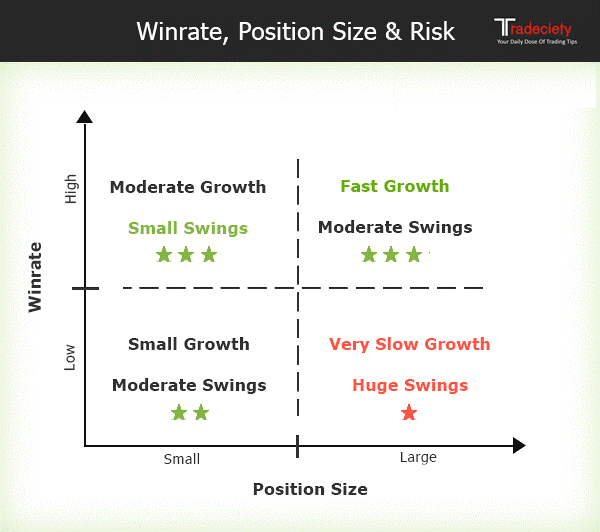TRADING RISK MANAGEMENT

Understanding the Importance of Risk Management in Trading
Risk management plays a crucial role in successful trading. It is the process of identifying, assessing, and prioritizing potential risks to minimize losses and protect investment capital. Effective risk management strategies are essential for traders to navigate the volatile and unpredictable nature of financial markets.
Why is Risk Management Important in Trading?
1. Preservation of Capital: Implementing risk management techniques helps traders preserve their capital by limiting potential losses. By setting stop-loss orders and position sizing, traders can control the amount of risk exposure in each trade.
2. Consistency in Performance: With proper risk management, traders can maintain consistency in their trading performance. By managing risk effectively, they can avoid significant drawdowns and maintain a steady equity curve over time.
3. Emotional Control: Risk management helps traders maintain emotional control by reducing the fear and anxiety associated with trading. When traders know their maximum risk in advance, they can make rational decisions without being driven by emotions.
Key Risk Management Techniques
1. Setting Stop-Loss Orders: A stop-loss order is a predetermined price level at which traders exit a trade to limit potential losses. It helps traders define their risk tolerance and avoid excessive losses.
2. Diversification: Diversifying the trading portfolio across different assets, sectors, or strategies can minimize the impact of any single trade or market event. By spreading the risk, traders can protect themselves from substantial losses.
3. Position Sizing: Determining the appropriate position size based on the risk tolerance and the specific trade setup is crucial for managing risk. By sizing positions appropriately, traders can limit the impact of losing trades on their overall portfolio.
Trading Risk Management: Safeguarding Your Investments
Trading in financial markets can be a rewarding yet challenging endeavor. One of the keys to long-term success is effective risk management. Without a proper risk management strategy, even the most promising trades can lead to significant losses. In this article, we'll explore the crucial concept of trading risk management and how it plays a pivotal role in preserving and growing your capital.
Understanding Risk in Trading:
Risk in trading refers to the potential of losing capital on a trade. It's an inherent aspect of the financial markets, and traders must navigate it wisely. While the goal is to generate profits, acknowledging and managing risk is equally important.
The 2% Rule:
One widely adopted risk management principle is the 2% rule. This rule suggests that a trader should not risk more than 2% of their total trading capital on a single trade. By adhering to this rule, traders aim to protect their capital from substantial losses, ensuring that no single trade has the potential to wipe out a significant portion of their account.
Diversification:
Diversifying your trading portfolio is another key aspect of risk management. Instead of concentrating all investments in a single asset or market, spreading your capital across different instruments helps mitigate the impact of a poor-performing asset on the overall portfolio. Diversification is a strategy used to reduce risk by allocating investments among various assets.
Setting Stop-Loss Orders:
A stop-loss order is a risk management tool that helps limit potential losses. Traders set a predetermined price level at which their position will be automatically liquidated. This ensures that if a trade moves against them, the losses are contained within predefined limits. Stop-loss orders are essential for disciplined risk management.
Position Sizing:
Determining the size of each position relative to your total capital is crucial. Even with a promising opportunity, risking too much on a single trade can expose you to unnecessary vulnerabilities. Position sizing involves calculating the ideal amount of capital to allocate to a specific trade based on your risk tolerance and the trade's potential.
Conclusion
Trading risk management is a vital aspect of successful trading. By implementing effective risk management strategies, traders can protect their capital, ensure consistency in performance, and maintain emotional control. Techniques such as setting stop-loss orders, diversification, and position sizing can help traders navigate the unpredictable nature of financial markets and minimize potential losses. Remember, the key to successful trading lies not only in generating profits but also in managing and mitigating risks,trading risk management is the bedrock of a successful trading career. Implementing strategies like the 2% rule, diversification, stop-loss orders, proper position sizing, and assessing risk-reward ratios can significantly enhance your ability to navigate the complexities of financial markets. Remember, the goal is not just to make profitable trades but to protect your capital and thrive in the dynamic world of trading.
- Pingback: IMPORTANCE OF NEWS IN TRADING - strategictraderpro.com
Leave a Reply
